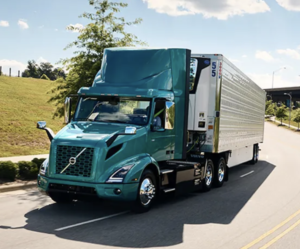Technology Volvo is currently testing to help electric trucks go even further.
- August 17, 2023
- Blog
- Posted by Derick
- Leave your thoughts
Electric trucks (and electric vehicles in general for that matter) are still a bit of an anomaly for many people. From this, there are countless misunderstandings, half-truths and even outright falsehoods that many people believe to be fact when it comes to these new rigs.
Probably the ultimate current example of this is that electric trucks don’t have the ability to travel long distances on a single charge. This is completely false. The fact is that currently electric Volvo trucks can cover an outstanding distance. One one single charge, you can travel up to 440 kilometres! Thats basically the distance from Toronto to Ottawa, and again thats on one single charge!
Not far enough? You want more distance?
Not a problem, just plug in while you’re eating lunch and you can easily extend that distance. If you recall, in a previous blog post we noted that depending upon how many batteries your Volvo is equipped with (there can currently be up to 3), and whether you charge with AC or DC current (DC is faster), it takes about 90 minutes to fast charge up to 80% capacity (we realize you won’t take a 90 minute lunch, but even a 40 minute charge will give you plenty more driving km’s for your day). So now that we’ve established that as things sit right now electric rigs are more than up to the distance task, let’s talk about a technology Volvo is currently testing to further increase their driving distance. Fuel cell electric trucks.
These are a viable emission free alternative to the trucking industry. They run on hydrogen and only emit water. The purpose of these will be to help with demanding long haul, heavy loads or even 24/7 shift operations. So how does a fuel cell electric truck work then? The trucks electricity will be generated by fuel cells using hydrogen. The hydrogen will be stored in gas tanks and help to offer longer range than batteries.
Another nice thing about this technology is that the hydrogen tanks can be filled as fast as a diesel rig can be.
Now this is still in the testing phase, but it’s just another example of how Volvo is not only constantly striving to improve the lives of truckers, but also when it comes to environmentally sustainable innovation.


